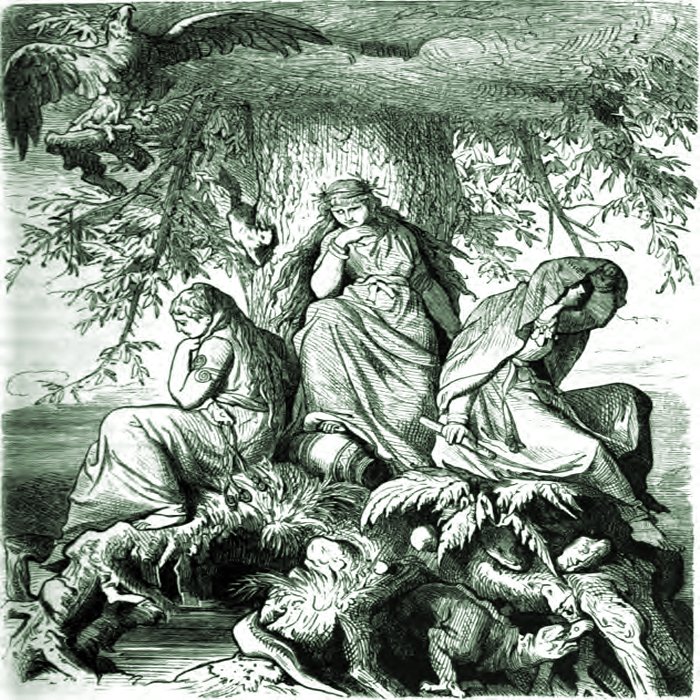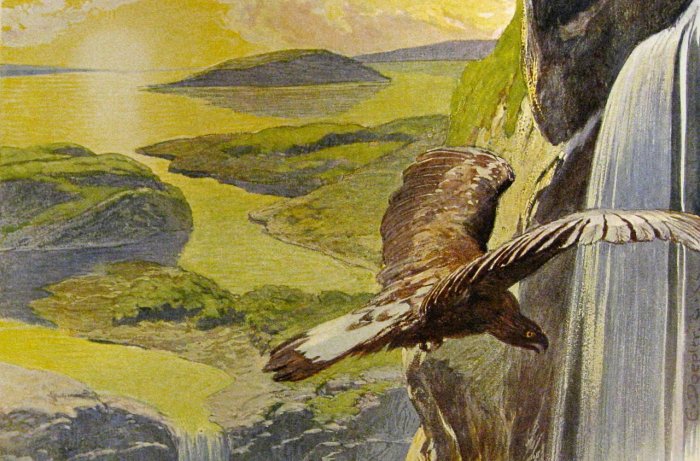Andlang – Spiritual Heaven And Shelter For The Dead After Ragnarok In Norse Mythology
Ellen Lloyd - AncientPages.com - The concept of life after death is often mentioned in Norse mythology, and there are several stories about the journeys of the dead and souls in Norse Sagas.
Andlang offered shelter for those who died during or after Ragnarok. Credit: Public Domain
The afterlife is interesting because it reflects some of the deepest beliefs of the Norse people. For example, the Vikings were convinced that if they died as heroes in a battle, they would be granted access to Valhalla, where God Odin ruled.
Valhalla was a reward for the most challenging struggles, wounds, and, finally, death. Knowing you would enjoy this gigantic and majestic chamber of the fallen heroes, warriors, and mighty chiefs motivated Vikings to become fierce warriors, and they certainly didn't fear death.
As the leader of the dead, God Odin is often mentioned as the one responsible for the souls of the deceased. The Norse deity Odin can be regarded as a counterpart of the Roman Mercury Psychopompus. As a personification of the wind, Odin uses his wings to carry disembodied souls when they leave the mortal sphere.
The Norns Urðr, Verðandi, and Skuld under the world oak Yggdrasil (1882) by Ludwig Burger (1825-1884). - Wägner, Wilhelm. 1882. Nordisch-germanische Götter und Helden. Otto Spamer, Leipzig & Berlin. Page 231.
One of the most critical events that gods, humans, and all living creatures must face and deal with is Ragnarok, an inevitable doomsday that cannot be stopped. Ragnarok is the doom of the gods and an apocalyptic record of the coming comet that will damage the Earth.
The concept of fate dominates Norse mythology, and to the Norse people, fate was a fact of life that could not be avoided or changed. The Norns were goddesses who ruled people's fates and determined the destinies and lifespans of individuals.
Described in the Eddas (1250), a collection of Old Norse poems, Ragnarok will be a horrifying period when life on our planet will perish. People must be prepared for massive earthquakes, fire, and water, with steam and flames reaching the high heavens.
Fenrir, the most infamous of all creatures in Norse mythology, plays an essential role during Ragnarok. This giant monster wolf will kill God Odin and bring chaos to the world.
The new world that rises after Ragnarök, as described in Völuspá (depiction by Emil Doepler). Emil Doepler - Doepler, Emil. ca. 1905. Walhall, die Götterwelt der Germanen. Martin Oldenbourg, Berlin. Page 58. Photographed and cropped by user: Haukurth - Public Domain
Needless to say, like all other doomsday prophecies, Ragnarok offers a pessimistic view of the future. Death, misery, and catastrophes will rule the Earth. Those few who survive will be wishing they died instead.
Snorri Sturluson (1179 – 1241), an Icelandic poet, historian, and politician who wrote the Prose Edda and the Heimskringla, described the existence of nine heavens in his works, similar to the mysterious nine worlds of Yggdrasil – the sacred tree of life in Norse mythology.
According to Snorri, Andlang will be a shelter for the dead after Ragnarok.
Andlang is spiritual heaven where the souls of the dead can gather during and after the destruction of Ragnarok. It is the second of three heavens in the cosmology of his work Gylfaginning which deals with Norse cosmology concepts and the creation and destruction of the world of the Norse gods.
It is above Asgard, the realm of the gods, and below a higher Heaven, Vidblain.
In Gylfaginning, Snorri writes: "Thus says the Prophecy of the Vala:
A hall I know, standing
Than the sun fairer,
Than gold better,
Gimle by name.
There shall good
People dwell,
And forever
Delights enjoy.
Then said Gangleri: Who guards this palace when Surt's fire burns up heaven and Earth? Har answered: It is said that to the south and above this heaven is another heaven, which is called Andlang.
But there is a third, above these and called Vidblain. In this heaven, we believe this mansion (Gimle) to be situated; but we deem that the light elves alone dwell in it now.
While researching the subject of Andlang, we face a problem. No Norse texts mention this place, and Anlang is also never described in Norse runes.
Was Andlang just an invention of Snorri? Scholars made attempts to interpret the name and suggest Andlang could mean "long-" or "far-breathing" and "limitless aether."
Philologist Rudolf Simek who translated many Norse Sagas into German found a connection between Andlang and the Coelus Spiritualis, the "spiritual heaven" in the original Latin version of the Elucidarius.
Still, without finding more sources mentioning Andlang, it's impossible to determine the nature of this heavenly realm.
Written by Ellen Lloyd – AncientPages.com
Updated on November 28, 2022
Copyright © AncientPages.com All rights reserved. This material may not be published, broadcast, rewritten or redistributed in whole or part without the express written permission of AncientPages.com
More From Ancient Pages
-
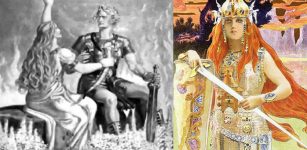 Valkyries Sigrdriva And Brynhildr: Brave Warriors Who Were Punished By God Odin In Norse And Germanic Mythology
Featured Stories | Apr 4, 2017
Valkyries Sigrdriva And Brynhildr: Brave Warriors Who Were Punished By God Odin In Norse And Germanic Mythology
Featured Stories | Apr 4, 2017 -
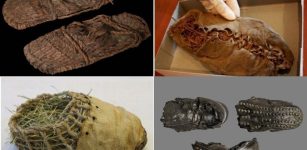 World’s Oldest Shoes: Some Look Surprisingly Modern
Artifacts | Jun 22, 2023
World’s Oldest Shoes: Some Look Surprisingly Modern
Artifacts | Jun 22, 2023 -
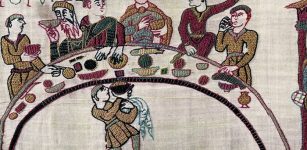 Bayeux Tapestry: Original Location Of Remarkable Romanesque Art – Finally Solved
Archaeology | Oct 26, 2019
Bayeux Tapestry: Original Location Of Remarkable Romanesque Art – Finally Solved
Archaeology | Oct 26, 2019 -
 Unexplained Behavior In People Found After Being Lost In National Parks – Strange Encounters With Dangerous Humanoids And The Little People
Featured Stories | Oct 27, 2024
Unexplained Behavior In People Found After Being Lost In National Parks – Strange Encounters With Dangerous Humanoids And The Little People
Featured Stories | Oct 27, 2024 -
 Spectacular Find: Lost Temple Of Goddess Artemis Has Been Found On Greek Island Of Euboea
Archaeology | Sep 22, 2017
Spectacular Find: Lost Temple Of Goddess Artemis Has Been Found On Greek Island Of Euboea
Archaeology | Sep 22, 2017 -
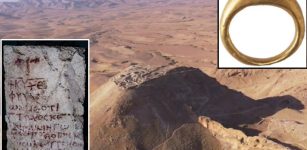 Byzantine Greek Inscription Of Psalms 86 Found In Hyrcania
Archaeology | Sep 29, 2023
Byzantine Greek Inscription Of Psalms 86 Found In Hyrcania
Archaeology | Sep 29, 2023 -
 Peculiar Bronze Mace Head Left By Unknown Ancient Culture Discovered In Poland
Archaeology | Jul 1, 2019
Peculiar Bronze Mace Head Left By Unknown Ancient Culture Discovered In Poland
Archaeology | Jul 1, 2019 -
 3,500-Year-Old Tomb Of Egyptian Goldsmith Discovered
Archaeology | Sep 10, 2017
3,500-Year-Old Tomb Of Egyptian Goldsmith Discovered
Archaeology | Sep 10, 2017 -
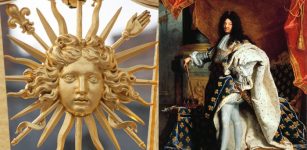 Why Was Louis XIV Called The Sun King?
Ancient History Facts | Jul 11, 2019
Why Was Louis XIV Called The Sun King?
Ancient History Facts | Jul 11, 2019 -
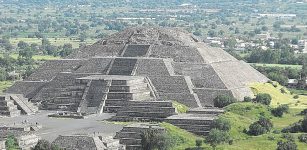 Pyramid Of The Moon At Teotihuacán – Underground Tunnel And Chamber Found
Archaeology | Oct 29, 2018
Pyramid Of The Moon At Teotihuacán – Underground Tunnel And Chamber Found
Archaeology | Oct 29, 2018 -
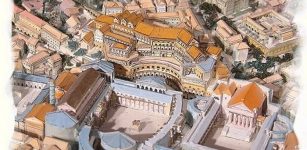 Trajan’s Market Was The World’s First Known Shopping Mall
Ancient History Facts | Jul 2, 2016
Trajan’s Market Was The World’s First Known Shopping Mall
Ancient History Facts | Jul 2, 2016 -
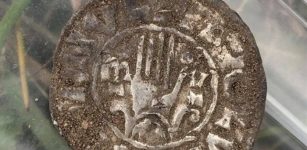 Hoards Of Viking Coins Discovered On The Island Of Saaremaa
Archaeology | Oct 7, 2019
Hoards Of Viking Coins Discovered On The Island Of Saaremaa
Archaeology | Oct 7, 2019 -
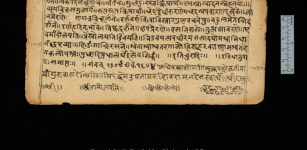 Ancient Grammatical Puzzle Solved After 2,500 Years
Linguistic Discoveries | Dec 15, 2022
Ancient Grammatical Puzzle Solved After 2,500 Years
Linguistic Discoveries | Dec 15, 2022 -
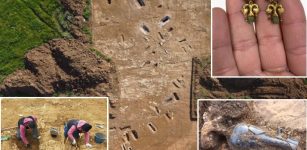 Incredible Roman Necropolis With Dressed Skeletons Buried In Ornate Tombs Discovered Close To The Ancient City Of Tarquinia
Archaeology | Jan 9, 2024
Incredible Roman Necropolis With Dressed Skeletons Buried In Ornate Tombs Discovered Close To The Ancient City Of Tarquinia
Archaeology | Jan 9, 2024 -
 Sunken Land Of Lyonesse: Legendary Kingdom That Influenced Stories Of Writers And Fishermen
Featured Stories | Mar 16, 2017
Sunken Land Of Lyonesse: Legendary Kingdom That Influenced Stories Of Writers And Fishermen
Featured Stories | Mar 16, 2017 -
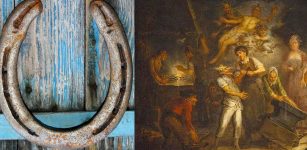 How The Horseshoe Became A Symbol Of Good Luck
Ancient Idioms & Superstitions | Jan 28, 2017
How The Horseshoe Became A Symbol Of Good Luck
Ancient Idioms & Superstitions | Jan 28, 2017 -
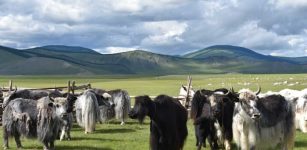 Yak Milk Consumption Among Mongol Empire Elites – New Study
Archaeology | Apr 1, 2023
Yak Milk Consumption Among Mongol Empire Elites – New Study
Archaeology | Apr 1, 2023 -
 Hero Stones Belonging to Pallava Era Found Near Tirupattur, India
Archaeology | Oct 15, 2015
Hero Stones Belonging to Pallava Era Found Near Tirupattur, India
Archaeology | Oct 15, 2015 -
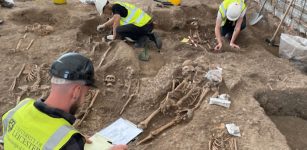 Ancient Roman Shrine And Over 1,100 Burials Found Beneath The Leicester Cathedral
Archaeology | Mar 7, 2023
Ancient Roman Shrine And Over 1,100 Burials Found Beneath The Leicester Cathedral
Archaeology | Mar 7, 2023 -
 Ancient City Of Adab That Flourished In North Sumer
Civilizations | Jul 19, 2017
Ancient City Of Adab That Flourished In North Sumer
Civilizations | Jul 19, 2017


